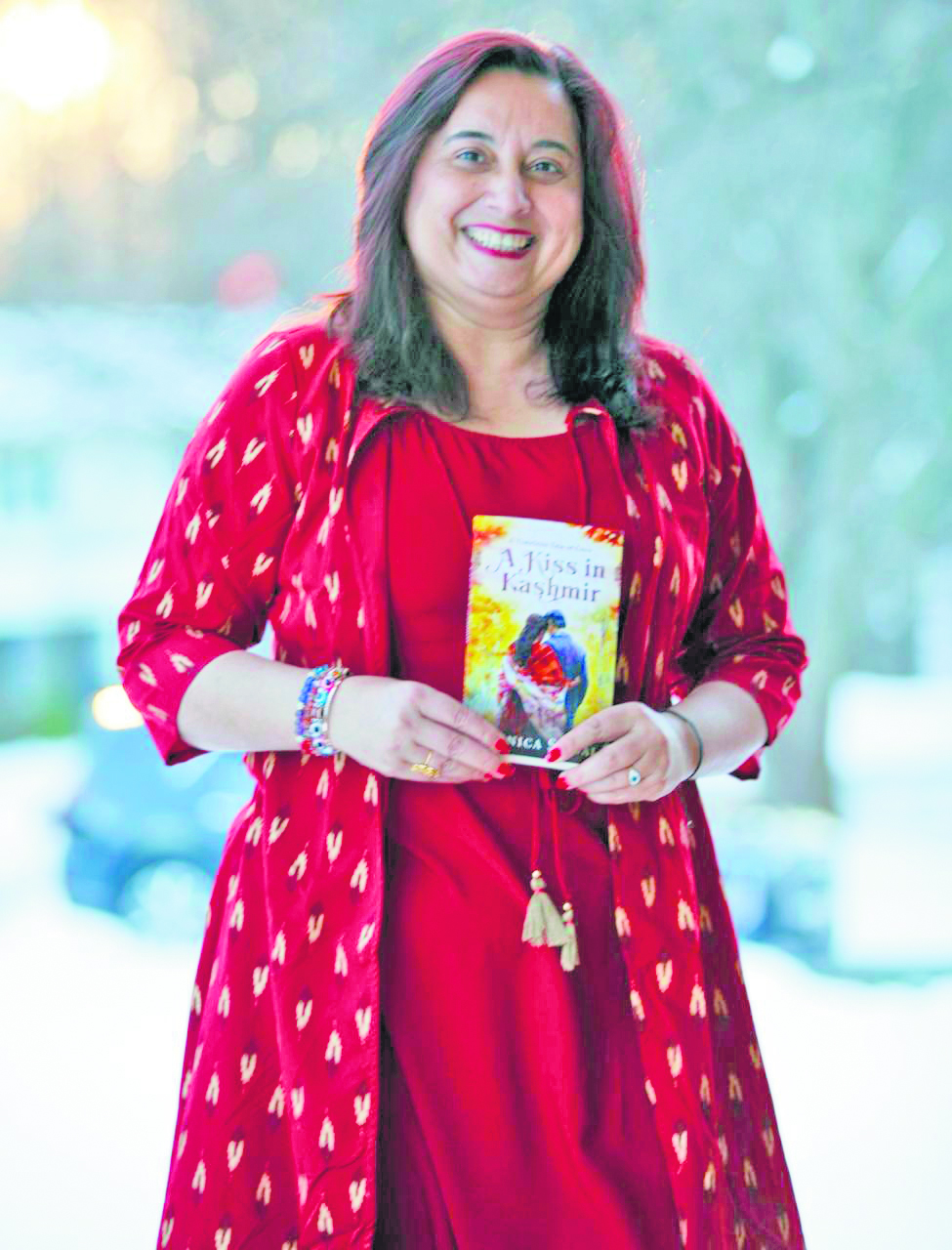
Monica Saigal (Bhide) is an international food writer and storyteller. Saigal has the prowess in weaving together the flavors of Indian cuisine with narratives of life, identity, and diaspora in works like Modern Spice and A Life of Spice. She is out with her 12th book A Kiss in Kashmir which has received a glowing praise from Celebrity Chef Vikas Khanna.
Excerpts
What’s the inspiration behind “A Kiss in Kashmir” and what led you to explore themes of love, loss, and second chances in the backdrop of Kashmir?
How do I even begin? Perhaps, with a rebellion.
“A Kiss in Kashmir” is my love letter to the untamed heart, a declaration of war against the cages society builds around our desires, especially as we age.
Our society often confines love to the realm of youth, as though the embers of passion cool with the passage of years. Reflecting on love’s presence in the later stages of life, I’ve come to see it as a profound connection that knows no bounds of age or form. This story is deeply personal to me, inspired by the courageous souls who dare to love again, to reopen their hearts despite past scars. “A Kiss in Kashmir” champions the idea that love’s embrace is boundless, welcoming us at any stage of life.
Sharmila and George seem like fascinating characters. How did you go about developing them, especially considering the complexities of later-life romance?
Creating Sharmila and George, the central characters of “A Kiss in Kashmir,” was a journey deeply rooted in real-life stories and emotions, particularly those reflecting the nuances of later-life romance. To bring authenticity and depth to their narratives, I embarked on a comprehensive research process, interviewing individuals in their fifties and sixties. These conversations spanned a wide range of experiences—from those who had discovered love anew to others who had not. Each story offered unique insights into the complexities of forming deep, romantic connections later in life.
George’s character, in particular, was influenced by poignant discussions with individuals who were widowed after long, fulfilling marriages. These conversations delved into the depths of survivor’s guilt and the process of finding love again while honoring past relationships. It was imperative to me that George’s experiences resonated with real-life emotions and challenges, portraying a truthful depiction of moving forward from loss with grace and hope.
The essence of Sharmila and George’s journey is a testament to the power of love to transcend time and circumstance, inspired by the real-life stories of resilience, hope, and the enduring capacity for connection that I was privileged to learn about in my research.
How does “A Kiss in Kashmir” differ from your previous work, such as “Karma and the Art of Butter Chicken” and “The Soul Catcher”.
A Kiss in Kashmir’ is distinctly different from the vibrant lanes of Delhi in ‘Karma and the Art of Butter Chicken’, where food becomes a vehicle for redemption and hope, to the mystical quests of ‘The Soul Catcher’, which navigates the intricacies of spiritual awakening and ancient wisdom.
In contrast, ‘A Kiss in Kashmir’ weaves its narrative not through the senses or the spirit, but through the heart’s resilience. Set against the poignant beauty of Kashmir, it delves into the themes of mature love, the complexities of starting anew, and the silent strength found in second chances. This novel is a celebration of life’s second acts, portraying a more reflective and nuanced understanding of love’s enduring power.